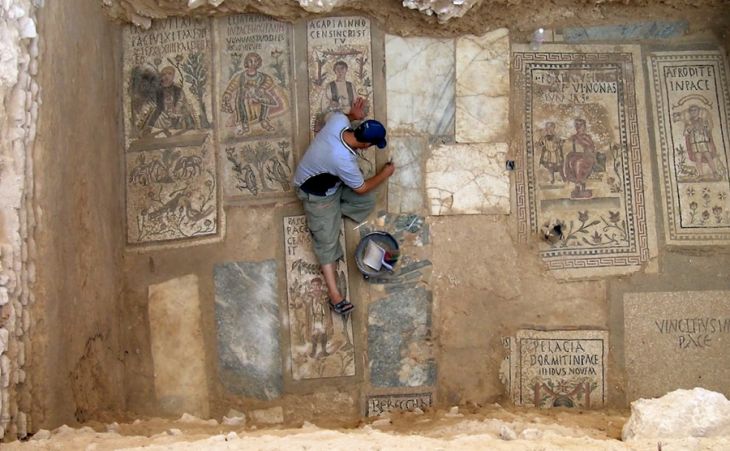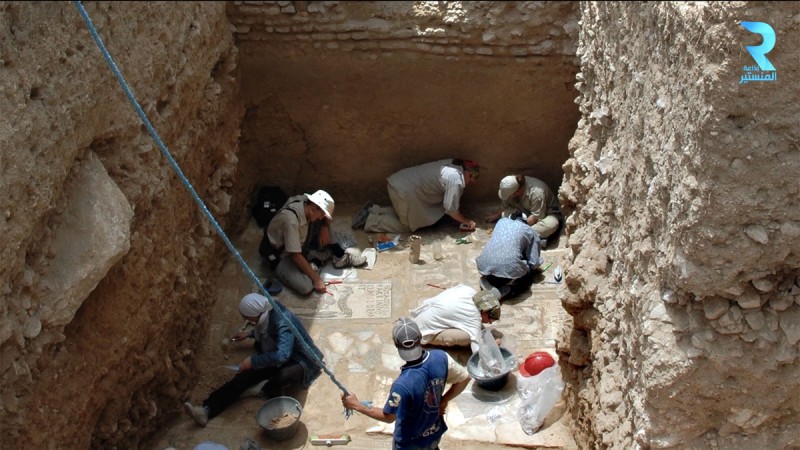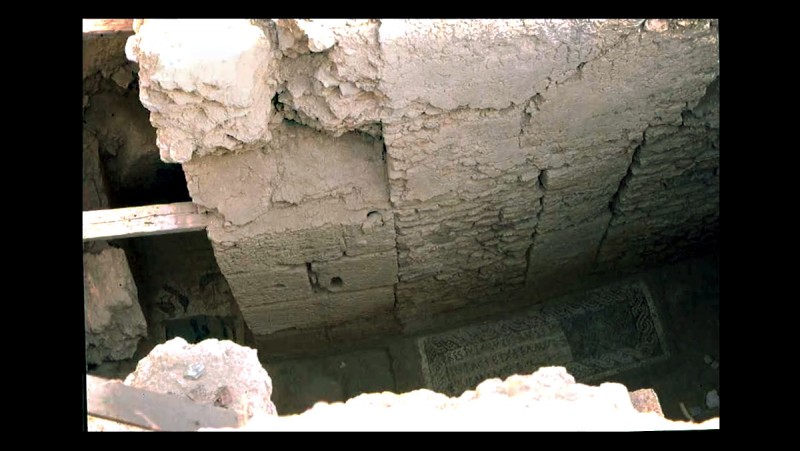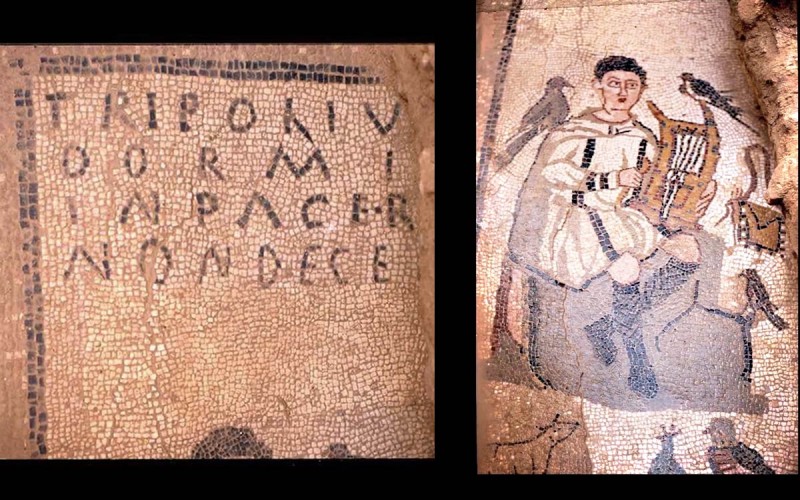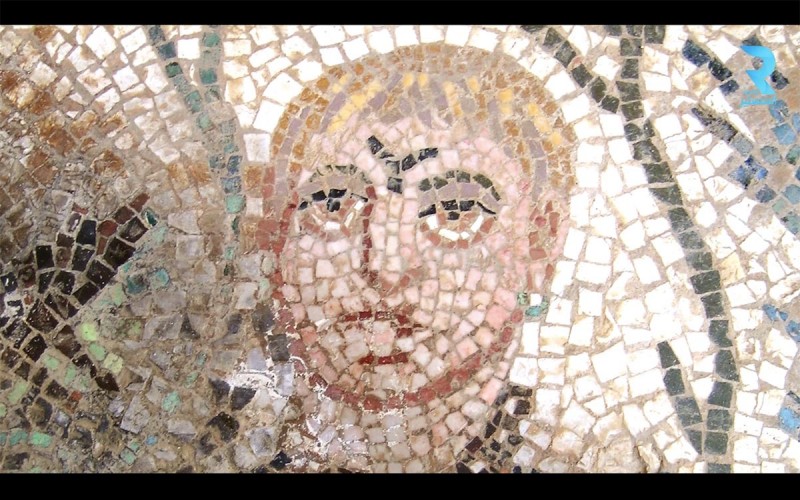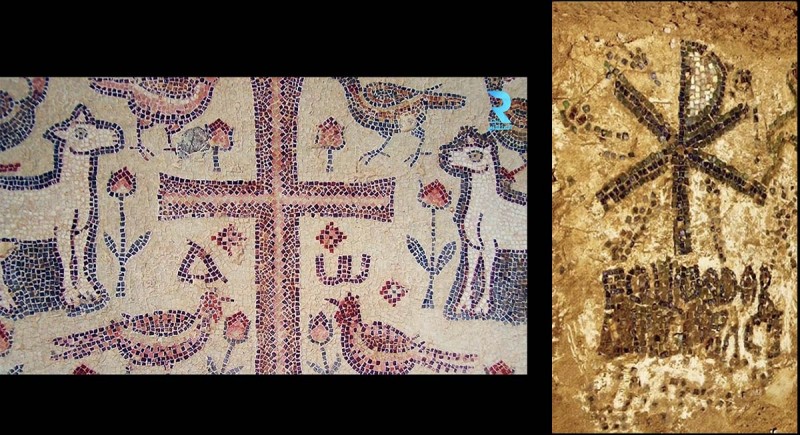An ancient underground cemetery was discovered at Lamta, near Monastir. A rare testimony to the life of the first Christians.
Under five meters of land, not far from the sea, on the site of the ancient city of Leptis, lie magnificent ancient Christian tombs covered with mosaics.
This partially excavated site cannot be visited yet. But it brings new knowledge about the life of the first Christians in Tunisia.
The Monastir Radio channel has just devoted a beautiful report to it.
The catacombs of Lamta on Radio Monastir (in Arabic):
Tunisia was one of the first lands where Christianity developed in the western part of the Mediterranean.
Saint Augustine of Hippo was born in Roman Africa in 354: it is precisely from this period that the tombs of Lamta date.
At that time, land was scarce around the big cities. It was therefore often necessary to dig underground chambers under the cemeteries to bury the new dead: the catacombs.
An incredible discovery
It all began in 1999 when a digging team came to the site to carry out test pits. An old master mason approached the person in charge and pointed out a house he had built in the past. Under one of the windows, he said, he had noticed vestiges…
So the team dug where it was indicated. The first grave found was that of a woman named Restuta. And near this grave, a staircase that seemed to lead to a basement!
It took another excavation mission in 2005 with American and Canadian researchers to dig again, this time far from the house that was in danger of collapsing.
The discovery was a major one. Seventeen tombs were uncovered; according to Nejib Belazreg, a research fellow at the National Heritage Institute, there could be a total of 80.
Intact, they are still covered with their magnificent mosaics.
Among the names inscribed on the tombs, several are of Greek origin – Eolius, Tripolius – but written in Latin letters.
It could therefore be a Romanized Greek family, long settled in Tunisia, and had its own cemetery. A family rich enough to build such an underground cemetery at its own expense.
There is also a mosaic depicting Orpheus, the musician hero of Greek mythology.
On some tombs is the portrait of the deceased, with his costume of the time and even his tattoos!
The tombs bear Christian symbols such as the cross and old symbols associated with Christ: the ‘alpha and omega’ and the monogram of Christ.
Such mosaic-covered tombs usually exist in ancient churches; they are tombs of bishops or clergymen. That is why even today this site is mistakenly called ‘the church of Lamta’.
Leptis is a vast site that stretches under the present city. A small part was already excavated: we can see there a small Museum (currently under renovation) and some vestiges of the old Thermal Baths.
If new excavations are undertaken in Lamta, they will allow to show to the public an exceptional document on the Christians of Tunisia, one of the main Christian communities of Antiquity.
Only 30 km from the medina of Sousse and 15 km from the Ribat (medieval fortress) of Monastir, there is no doubt that Lamta, which also has a small Ribat, could become one of the most beautiful cultural stops in this region.
(Pictures extracted from the program broadcast on October 18, 2020 on Radio Monastir)
